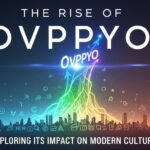Step into the captivating world of spaietacle, where art and spectacle collide in a dazzling display of creativity. This unique form has evolved through centuries, capturing hearts and imaginations across cultures. It’s more than just an art; it’s a thrilling journey that takes us from ancient civilizations to modern-day innovations. As we explore the rich history and dynamic evolution of spaietacle, you’ll discover how this vibrant expression continues to influence artists today. Are you ready to unravel the stories behind this mesmerizing phenomenon? Let’s dive in!
What is Spaietacle?
Spaietacle is a captivating fusion of art and performance. It transcends traditional boundaries, merging visual storytelling with immersive experiences.
At its core, spaietacle engages audiences through a dynamic interplay of movement, color, and sound. This innovative form invites spectators to not just watch but to feel and participate.
Each presentation is unique, often tailored to the environment in which it takes place. Artists manipulate light, space, and even architecture to create breathtaking spectacles that linger in memory long after they fade away.
The essence of spaietacle lies in its ability to transform ordinary settings into extraordinary realms. Whether it’s an urban landscape or a natural vista, every location becomes part of the narrative.
This art form challenges perceptions and ignites emotions. It’s more than entertainment; it’s an exploration of human connection through creativity.
The Origins of Spaietacle in Ancient Civilizations
The roots of spaietacle can be traced back to ancient civilizations, where artistry and performance merged. Early cultures utilized this creative expression as a form of storytelling, capturing the imagination of their audiences.
In Mesopotamia, elaborate rituals incorporated vibrant visual displays. These performances often celebrated deities or seasonal changes. The Egyptians also embraced similar forms, using color and movement in their ceremonial events to convey powerful messages.
Meanwhile, in Greece and Rome, spaietacle took on new dimensions. Theatre flourished with grand spectacles that combined music, dance, and drama. Audiences were enthralled by the intricate designs and dynamic presentations.
These early incarnations laid the groundwork for future adaptations. As humanity evolved, so did its artistic expressions—spaietacle being one of them—reflecting societal values and cultural shifts through time.
The Influence of Spaietacle in Medieval Times
During the Medieval era, spaietacle evolved into a captivating spectacle, shaping entertainment and culture across Europe. Its roots grew deeper as it intertwined with religious ceremonies and festivals.
Knights in shining armor dazzled audiences, while intricate pageants featured elaborate costumes and vivid storytelling. These performances were not merely for amusement; they conveyed moral lessons and historical narratives.
The emergence of traveling troupes brought spaietacle to local towns, connecting diverse communities through shared experiences. This art form provided an escape from daily life’s hardships while reflecting societal values.
As feudalism waned, spaietacle began to adapt again. It embraced themes of chivalry and romance that resonated deeply within medieval society’s fabric. The popularity of courtly love stories further enriched its narrative depth.
Thus, during the Middle Ages, spaietacle left an indelible mark on cultural heritage—bridging gaps between classes while entertaining all who gathered under its vibrant canopy.
Modern Transformations and Innovations in Spaietacle
The modern era has witnessed a remarkable evolution in spaietacle, transforming it into a dynamic and multifaceted art form. Artists today blend traditional techniques with cutting-edge technology to create immersive experiences.
Interactive installations have become popular, allowing audiences to engage directly with the artwork. This engagement turns spectators into participants, blurring the lines between creator and observer.
Digital media also plays a crucial role in contemporary spaietacle. Virtual reality (VR) and augmented reality (AR) have introduced new dimensions, enabling viewers to explore intricate environments that were previously unimaginable.
Collaboration is another hallmark of today’s spaietacle scene. Artists work alongside technologists, architects, and musicians to craft holistic experiences that captivate the senses.
Festivals celebrating this evolution showcase diverse styles and interpretations. These gatherings foster community while pushing boundaries further than ever before in this vibrant artistic realm.
Controversies and Criticisms Surrounding Spaietacle
Spaietacle, while celebrated for its creativity, has not been without controversy. Critics often argue that it can overshadow traditional art forms. This tension raises questions about cultural preservation versus innovation.
Another point of contention revolves around accessibility. Some believe that spaietacle is elitist, catering primarily to those with the financial means to experience or participate in high-profile events. This perception creates a divide between different socioeconomic groups.
Additionally, environmental concerns have emerged as spaietacle evolves into larger-than-life spectacles. The ecological footprint of extravagant displays has sparked debates among eco-conscious audiences and artists alike.
There’s an ongoing discussion regarding authenticity in the art form. As technology progresses and digital elements become more prevalent in spaietacle presentations, purists worry that the essence of this unique expression could be diluted or lost altogether.
The Global Impact and Popularity of Spaietacle Today
The popularity of spaietacle has surged globally, captivating audiences in diverse cultures. From bustling urban centers to remote villages, this art form transcends geographical boundaries.
Festivals and exhibitions dedicated to spaietacle draw thousands. Artists showcase their talent through intricate designs and performances that leave spectators mesmerized. Social media platforms amplify its reach, allowing enthusiasts to share experiences instantaneously.
Spaietacle also inspires new generations of creators. Workshops and online tutorials make it accessible for budding artists eager to explore this unique medium. Collaborations between traditional artists and digital innovators further enrich the landscape.
Cultural exchanges highlight the adaptability of spaietacle across different contexts. Each region adds its own flavor, celebrating local heritage while embracing global influences. This fusion creates a vibrant tapestry that enhances the appeal of spaietacle worldwide.
As it evolves, the community surrounding spaietacle continues to grow stronger, fostering connections among those who appreciate its beauty and complexity.
Reflection on the Enduring Legacy of Spaietacle
Spaietacle has woven itself into the fabric of artistic expression throughout history. Its vibrant colors and intricate designs tell stories that resonate across cultures.
Today, it remains a source of inspiration for contemporary artists. They draw from traditional techniques while infusing modern elements, sparking new conversations around its meaning and relevance.
The adaptability of spaietacle is fascinating. As societies evolve, so does this art form, reflecting current trends while honoring its roots.
In galleries and public spaces worldwide, captivates audiences with its striking visual impact. It encourages viewers to engage emotionally and intellectually with the artwork.
This connection fosters community dialogue about identity and heritage. Each piece serves as a reminder of the shared human experience through creativity.
Crafted by skilled hands or emerging talents alike, spaietacle’s legacy endures—bridging generations with beauty and meaning that transcend time.
Conclusion
Spaietacle is more than just an art form; it represents a rich tapestry of human creativity and cultural evolution. From its ancient beginnings to the modern innovations we see today, has continuously adapted to reflect societal changes.
Its origins can be traced back to early civilizations that utilized visual storytelling as a means of expression and communication. As societies evolved, so did the techniques and themes used in spaietacle, particularly during medieval times when it took on new forms influenced by religion and politics.
In recent years, this art form has undergone significant transformations. Modern artists are now blending technology with traditional methods, creating immersive experiences that captivate audiences like never before. Yet, despite its growth in popularity, is not without controversies. Discussions around commercialism versus artistic integrity continue to resonate within creative circles.
Today, reaches audiences worldwide through exhibitions and digital platforms alike. Its impact transcends borders—uniting cultures while inspiring future generations of creators.
As we look back at the journey of spaietacle throughout history, it’s evident that this unique art form will continue to evolve while leaving an indelible mark on our collective consciousness for years to come.






